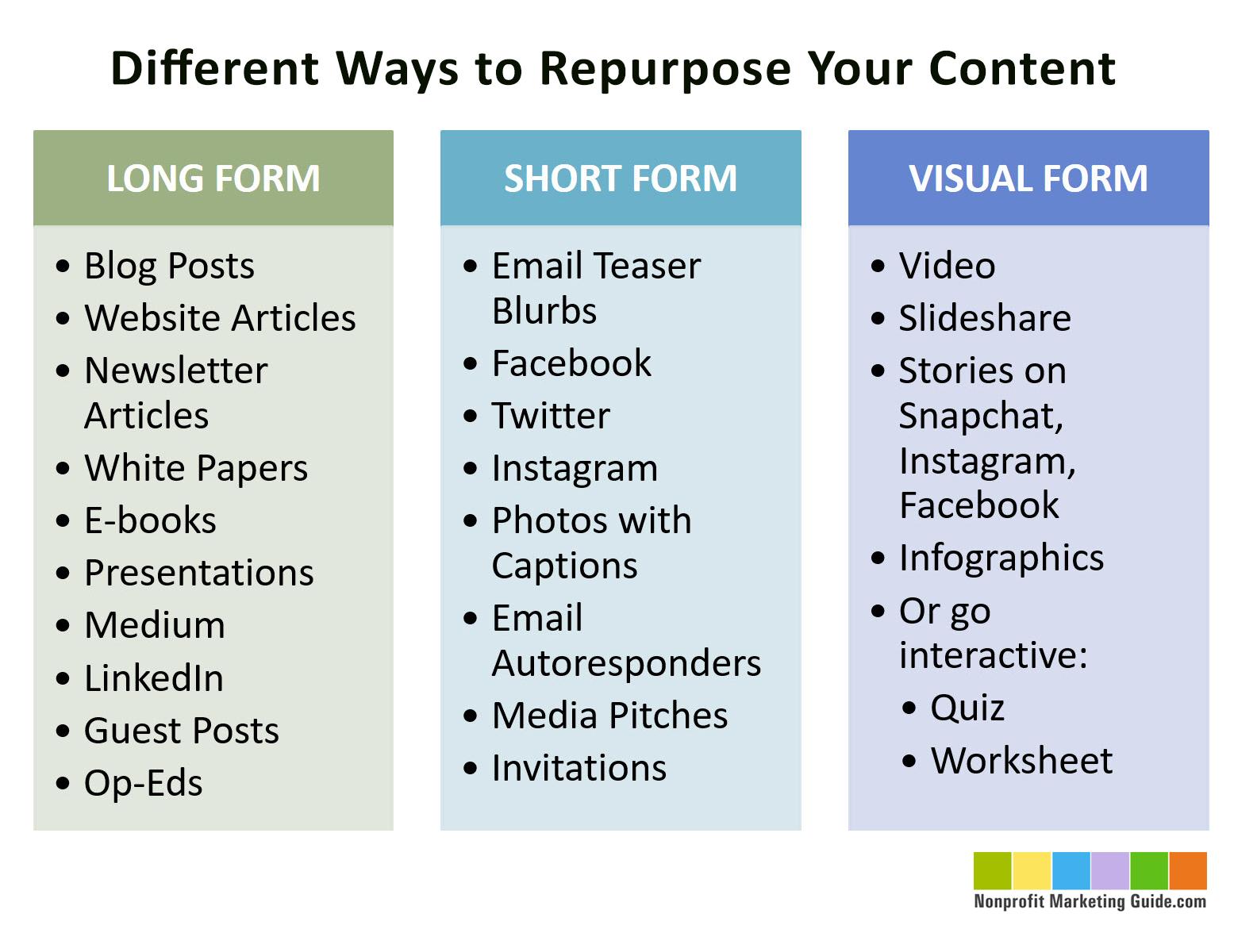
In today’s digital landscape, content is king, but creating fresh content for every platform can be overwhelming. Enter the art of repurposing content: a strategic approach that allows businesses and marketers to extend the life and reach of their existing content. In this article, we’ll delve into what repurposing content is, the benefits it brings, practical tips for effective execution, and showcase some inspiring case studies.Whether you’re a small business owner or a seasoned marketer,this guide will help you maximize your marketing efforts across multiple platforms.
What is Repurposing Content?
Repurposing content involves taking existing material and adapting it for different formats or platforms. This could mean turning a blog post into an infographic, a video, or a podcast episode. The goal is to give your content a new lease on life while reaching different audience segments who may prefer various formats.
Benefits of repurposing Content
- Efficiency: Save time and resources by maximizing existing content rather of creating new material from scratch.
- Increased Reach: Different platforms attract different audiences; repurposing allows you to reach a wider audience.
- Improved SEO: Fresh content on various channels can boost your search engine rankings and drive more traffic to your website.
- Enhanced Message consistency: Reinforce your brand message by sharing variations of the same core content across platforms.
- Content Variety: Keep your audience engaged by providing content in different formats, catering to varied preferences.
Practical Tips for Repurposing Content
if you’re eager to start repurposing your content, consider these practical tips:
- Identify high-Performing Content: Analyze engagement metrics to pinpoint which pieces of content resonate most with your audience.
- Know Your Audience: Understand the preferences of your audience on different platforms to tailor content accordingly.
- Choose the Right Formats: Select formats that fit your content type and audience. Examples include:
| Original Content Type | Possible Repurposed Formats |
|---|---|
| Blog Post | Infographic, Video, Podcast |
| Video | Blog Post, Instagram Snippet, Webinar |
| Webinar | Blog Series, Short Video Clips, E-book |
Engagement and Adaptation
Once you have repurposed content ready, engage with your audience to gauge their responses. Pay attention to feedback and adapt future repurposing efforts accordingly. Incorporating comments and suggestions can provide insights into what future content may resonate well.
Case Studies: Brands Successfully Repurposing Content
Case Study 1: HubSpot
HubSpot exemplifies effective content repurposing, commonly converting their extensive e-books into smaller, digestible blog posts, infographics, and even podcasts. This strategy increases visibility while catering to different audience preferences.
case Study 2: Neil Patel
Neil Patel frequently enough transforms his popular blog posts into engaging videos or podcasts,allowing him to tap into auditory and visual learners. This diversification has significantly expanded his reach across platforms.
First-hand Experience in Repurposing Content
When I began my blogging journey, I found it challenging to maintain consistent content across multiple platforms. By repurposing a few of my high-performing blog posts into short videos for social media, I noticed a surge in engagement. The feedback was overwhelmingly positive, leading me to create an entire video library from old blog content. The experience reinforced the importance of repurposing as a sustainable strategy.
Common Mistakes to Avoid
While repurposing can be an effective strategy, its essential to steer clear of common pitfalls:
- Overlooking Audience preference: Failing to consider how your audience prefers to consume content can lead to ineffective repurposing.
- Neglecting SEO: Ensure repurposed content maintains its SEO integrity; optimize it for search engines just as you would your original content.
- Quality over Quantity: Repurposing quantity shoudl not compromise quality. Always prioritize delivering valuable content.
Conclusion
Repurposing content is more than just a trend; it’s a savvy marketing strategy that can significantly enhance your reach and efficiency. By understanding the benefits, following practical tips, and learning from prosperous brands, you can effectively maximize your marketing efforts across platforms. Start by analyzing your existing content, and you may find untapped potential that can further elevate your brand’s visibility and engagement. Remember, the goal is not just to create more content but to create smarter, impactful content that resonates with your audience at every touchpoint.